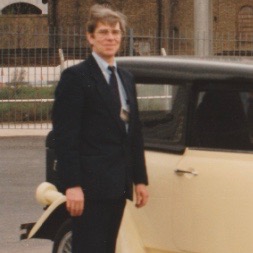News
Obituary: Peter Howse
Sunday 10 January 2016

Peter Howse (photo), 72, a hardware specialist and development manager who was a member of Reuters' Stockmaster and Videomaster teams in the 1960s and 1970s, died suddenly on 24 December 2015.
He joined Reuters in 1967 in London as a development engineer in the computer division. One of his initial assignments was to install the first generation Stockmaster equipment in Amsterdam and organise the transfer of clients from the Frankfurt installation. He continued to work in the computer division, maintaining central systems and client equipment, until 1973 when he put together a prototype Money Rates product for demonstration purposes. It used spare Stockmaster hardware modified for the purpose and, whilst it in no way resembled the software-based solution eventually chosen, it proved the concept of what became the Reuter Monitor system.
Peter transformed Monitor from something that worked in the lab to a real-world solution for clients. This included a terminal controller front panel and options card supporting remote reboot and audible alarms. There were also innovative schemes to allow clients to update Monitor and in-house systems simultaneously, encouraging acceptance of the product. He also introduced the first field service van, which proved to be a major breakthrough, replacing the use of black taxis to relay bulky equipment to client offices.
He then joined Technical Development and in 1975 was assigned to IDR Farmingdale, New York to work on the emerging technology of microprocessors and their possible application to Reuter terminal controllers. At the time the installation and maintenance of the basic PDP-8-based Monitor terminal was extremely costly and it wasn't long before a small team was set up with Peter as the key hardware designer and technical lead to design a completely new Monitor terminal based on Intel technology. The outcome was the MES/MAS 300 terminal controller and it proved to be a breakthrough in reducing Monitor product delivery and support costs. It also drastically reduced installation times in an era when a wait of one year was not unusual for connection of a new terminal. Over 31,000 were eventually installed and the last ones were not removed until the early 1990s.
By 1978 Peter was back in London and leading the Special Products Group, which with a mix of hardware and software specialists who loved getting their hands dirty produced a range of keyboard and video switching devices, known as interface products, and the first range of datafeeds. These interface products fuelled the growth of the trading room business and Reuters’ entry into open systems, and continued to do so until their gradual displacement by digital technology, such as Triarch, in the late 1980s. A particular achievement of the group was the compression of a Monitor datafeed onto a PC interface card which formed the basis for the family of Advanced Reuter Terminals and the introduction of the personal computer into trading rooms.
He retired in 1994 with the phrase “I declare myself redundant”.
Peter was a well-loved and highly respected engineer. He was eminently practical with the ability to see directly to the heart of a problem and produce simple, elegant engineering solutions. He had a healthy mistrust of marketing and software types and would often challenge people, part-seriously, with "what have you ever done for Reuters". His other well-known riposte was “names and addresses?” when confronted with a marketing request for large quantities of development effort to be deployed on a new product idea. He rightly suspected that the product might only ever be sold to a mere handful of clients and would be a waste of a valuable resource.
Reuters was fortunate in having such a productive and capable employee during a critical phase in the development of its global business. ■
- « Previous
- Next »
- 873 of 2174